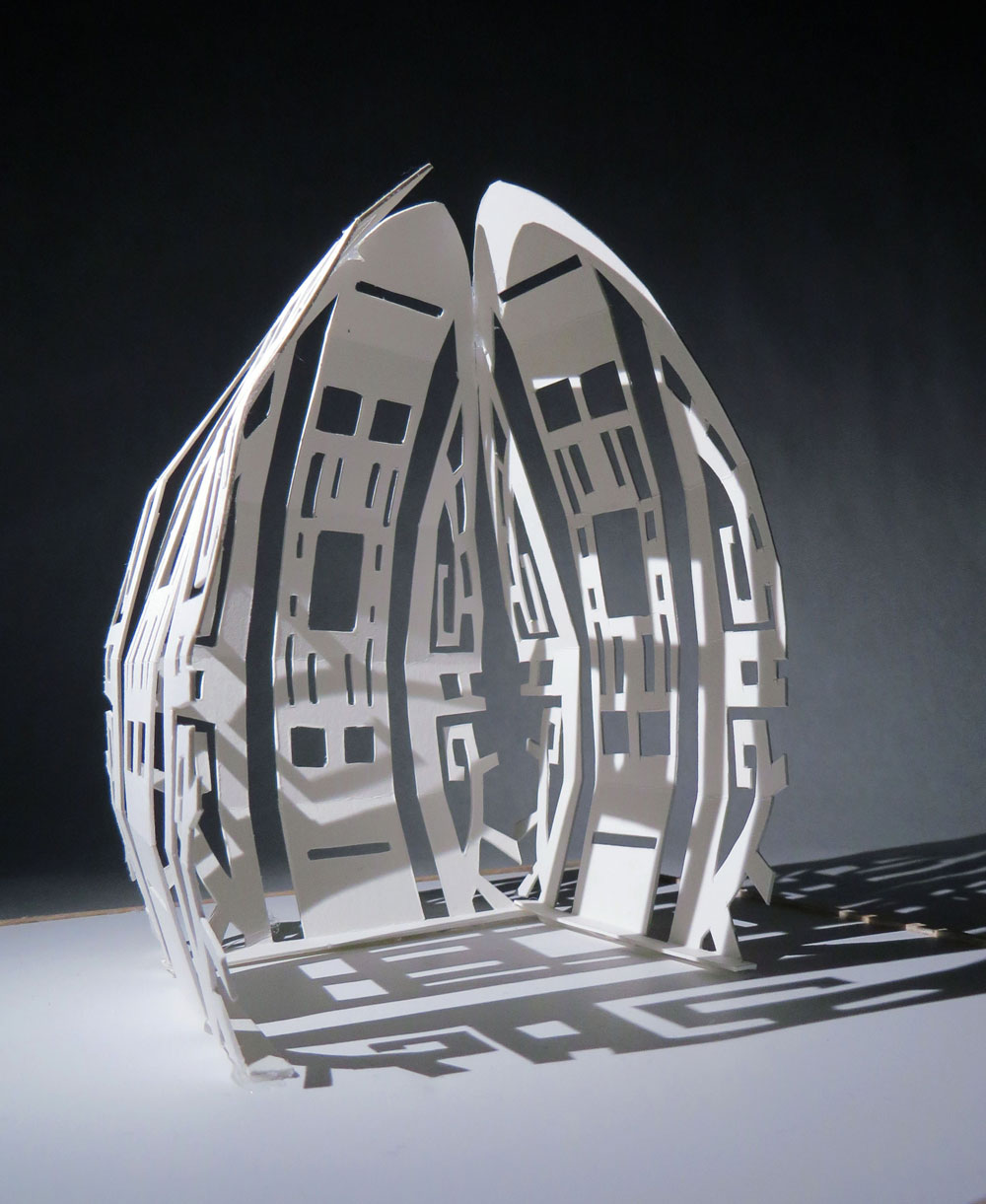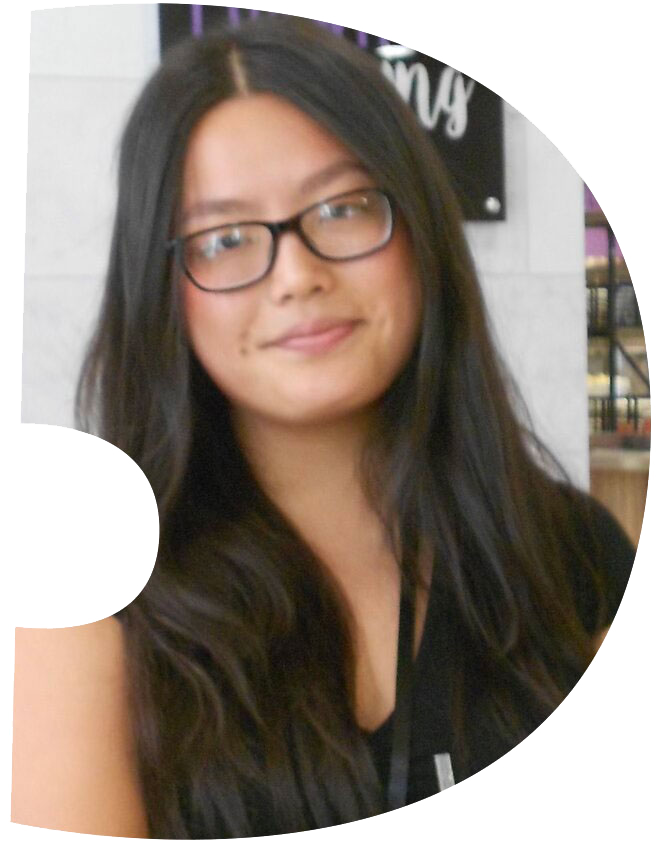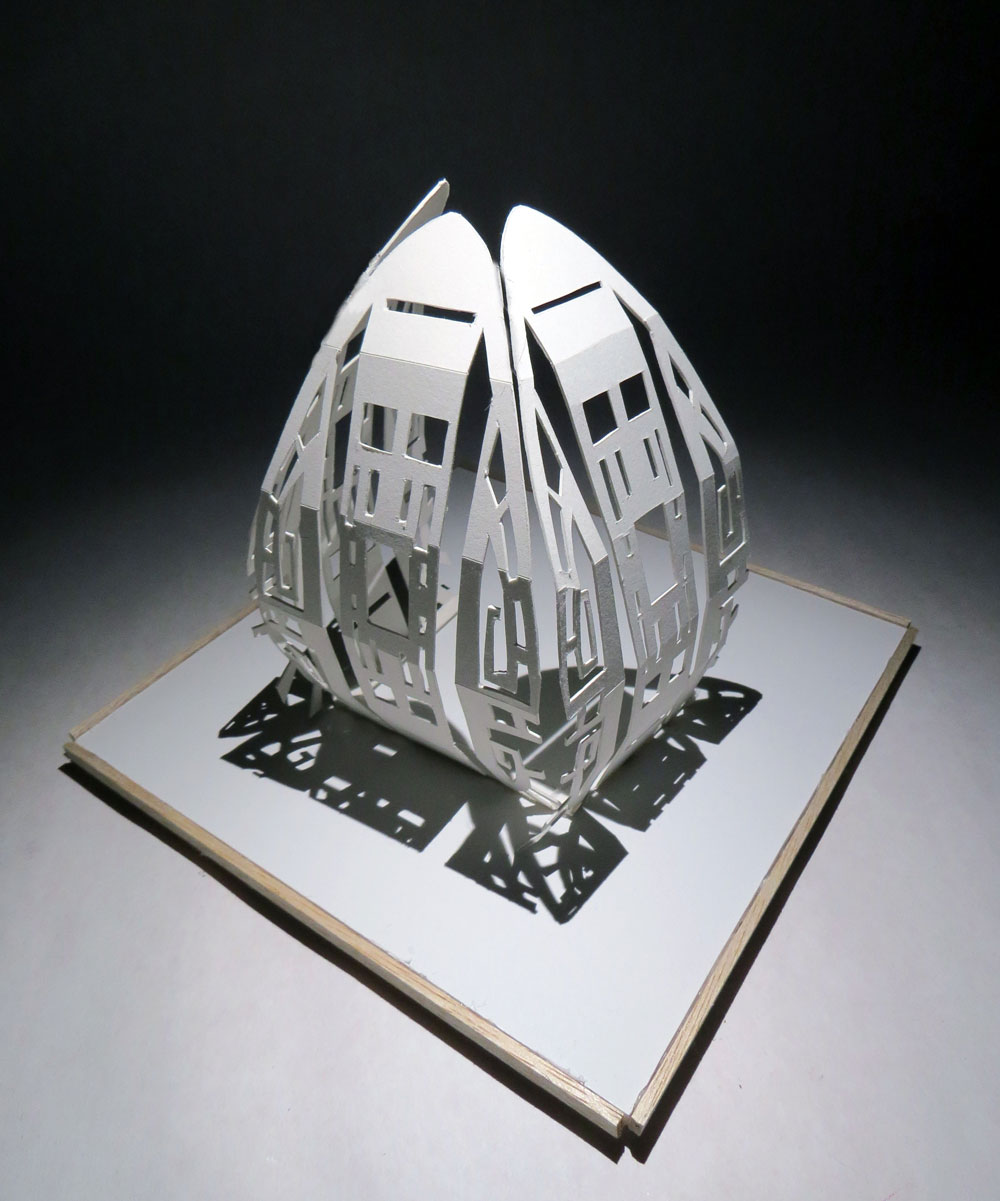

Carvings of Time

Height: 6.5" x Width: 8.25" x Depth: 8.25' | Material(s): Museum board foam board, balsa wood | Process(es): Sculpted/scored ornate pattern of congruent planes to sculpt a wrapped, curved inviting enclosure | Idea(s): Inspired by the distinctive engravings of exterior walls, railings, and openings in Chinese temples | Curatorial Note: Sophisticated use of simple materials to activate three-dimensional space.
Sophia Lian


Student statement
Student statement
Does your work reference or draw on a contemporary or historical art-making style, practice, or tradition? If so, please explain.
My artwork draws inspiration from ancient Chinese cultural design influences that blend symbolism and a timeless aesthetic. I focused on the component of bilateral symmetry that exhibits a sense of a balanced, harmonious flow. This piece displays the ornately carved patterns that surround the exterior walls, railings, and openings that can be found in ancient Chinese temples, imperial palaces, and pavilions. The intricate pattern serves as a core strength that curves into an inviting enclosure space.
What did you do to improve your 2-D, 3-D, or Drawing portfolio skills?
The only way that I could improve in making architecture models is through failure. This includes the numerous times when I realized that I might have rushed the sketching and measuring process or how when one piece is not attached perfectly, the whole piece is thrown off. Such experiences allow me to learn what to pay attention to each time I make any progress in my artwork.

Material(s): Museum board foam board, balsa wood | Process(es): Detail expressing intricacy of Chinese design influence in solid/void wall pattern/shadow importance | Curatorial Note: Good craftsmanship and lighting create a good composition. The highlighted surfaces of the cutout form contrast with the shadows in the background. The design of the form is resonated in the reflection of the shadows.
In what ways did your art-making confidence increase in AP Art and Design?
My art-making confidence increases every time I am able to see how my two hands could bring my visions to life. When I get to complete a piece, even if it comes out differently from what I originally planned, I see how much potential I have in creating works that improve every time or at least show a growth in trying something new.
How did you modify or revise your art-making direction based on feedback?
In my original design, I planned on constructing four walls that would build a closed-off cone shape with carved patterns. The shadows on the piece would take up the surrounding space. While I was in my art-making process, it was suggested to create a tri-sided, almost egg-shaped structure that wrapped around, forming an open room in the interior. I decided to implement this idea because it would allow the shadows of the structure to cast upon each other, capturing the piece's transformation at different moments, rather than just around the structure's body.

My sustained investigation takes inspiration from the embodiment of ancient Chinese cultural design influences that merge functionality and symbolism. Analyzing the style of the structures in the civilization, from imperial palaces to courtyard compound residences, I discovered an underlying composition of bilateral symmetry with a core strength that reflects the prominent notes of balance and harmony. The spaces are often ornately carved with intricate patterns surrounding their exteriors and openings. I wished to blend the past and present fostering a timeless yet modern aesthetic.
Joan Gonzalez
Art Teacher
Sanford H. Calhoun High School, Merrick, NY, USA
Teacher statement
Teacher statement
The AP Art and Design course supports inquiry-based personalized learning in the sustained investigation portfolio component. What strategies helped you guide students through inquiry?
Some effective strategies I’ve found for supporting skill development alongside inquiry include encouraging students to ask open-ended questions about topics that hold personal significance or interest. I also emphasize the importance of documenting their creative process, explaining their artistic decisions, and reflecting on how their work evolves over time. This approach creates a continuous thread of self-awareness and intentionality that students can reference throughout their projects. Additionally, facilitating regular peer and teacher critiques provides valuable feedback, helping students refine their craftsmanship and investigation and clearly demonstrate growth.
What creative programming (i.e., exhibit spaces, mentoring programs, curricular supports) have you implemented to support AP Art and Design students?
My classroom is a collaborative interaction of first- and second-year students studying architecture and design. Many students in their second year of study who have already submitted an AP 3D portfolio share their insights and experience with the new students pursing their sustained investigation. The open classroom with the free-flowing exchange of ideas helps foster an environment of creative growth and mutual learning. This dynamic setting encourages both first- and second-year students to actively engage in critical discussions, share innovative solutions, and provide constructive feedback. By blending the perspectives of those with more experience and those just beginning their journey, students are empowered to refine their skills, challenge their thinking, and expand their creative boundaries. The collaborative nature of the classroom fosters a sense of community, where students support each other and develop a deeper understanding of architectural and design principles.
What did you learn from working with your student?
Guiding Sophia through her investigative journey was both liberating and exhilarating. A brilliant and introspective designer, Sophia has a deep connection to her cultural roots, which is reflected in her work. Her meticulous attention to detail and commitment to structural integrity were evident as she curated her portfolio to embody balance, harmony, and architectural influences. Her dedication to her craft often extended beyond the classroom, as she devoted countless hours at home to sketching, designing, and refining her personal pieces. Each creation carries a unique imprint of Sophia’s personality and character, making her work not just a reflection of skill, but of her own essence.
Is there anything your school leadership does to support your art students or the art program?
The Bellmore-Merrick Central High School District places a strong emphasis on supporting the arts. At Calhoun High School, our principal, Nicole Hollings, is an enthusiastic advocate. She actively supports student competitions and exhibits, promotes curricular and facility advancements, and consistently celebrates and highlights the achievements of our student artists. Our school offers a dedicated student gallery space and after-school studio sessions, and fosters collaborative partnerships with local universities and museums, providing opportunities for advanced, culturally enriching artistic exploration and experiences.
What is your advice to other AP Art and Design teachers?
My advice to other teachers would be to encourage students to explore personal interests and experiences for their sustained investigation. Authenticity makes their work stand out. Celebrate risk-taking and innovation, even if some experiments fail. Share examples of high-scoring portfolios with students to clarify expectations. Teach students to photograph their work effectively, as presentation is crucial for digital submission. Foster a balance of technical skill, creative exploration, and thoughtful reflection. This not only helps students succeed on their portfolios, but also grow as confident and innovative artists.
Sophia Lian

